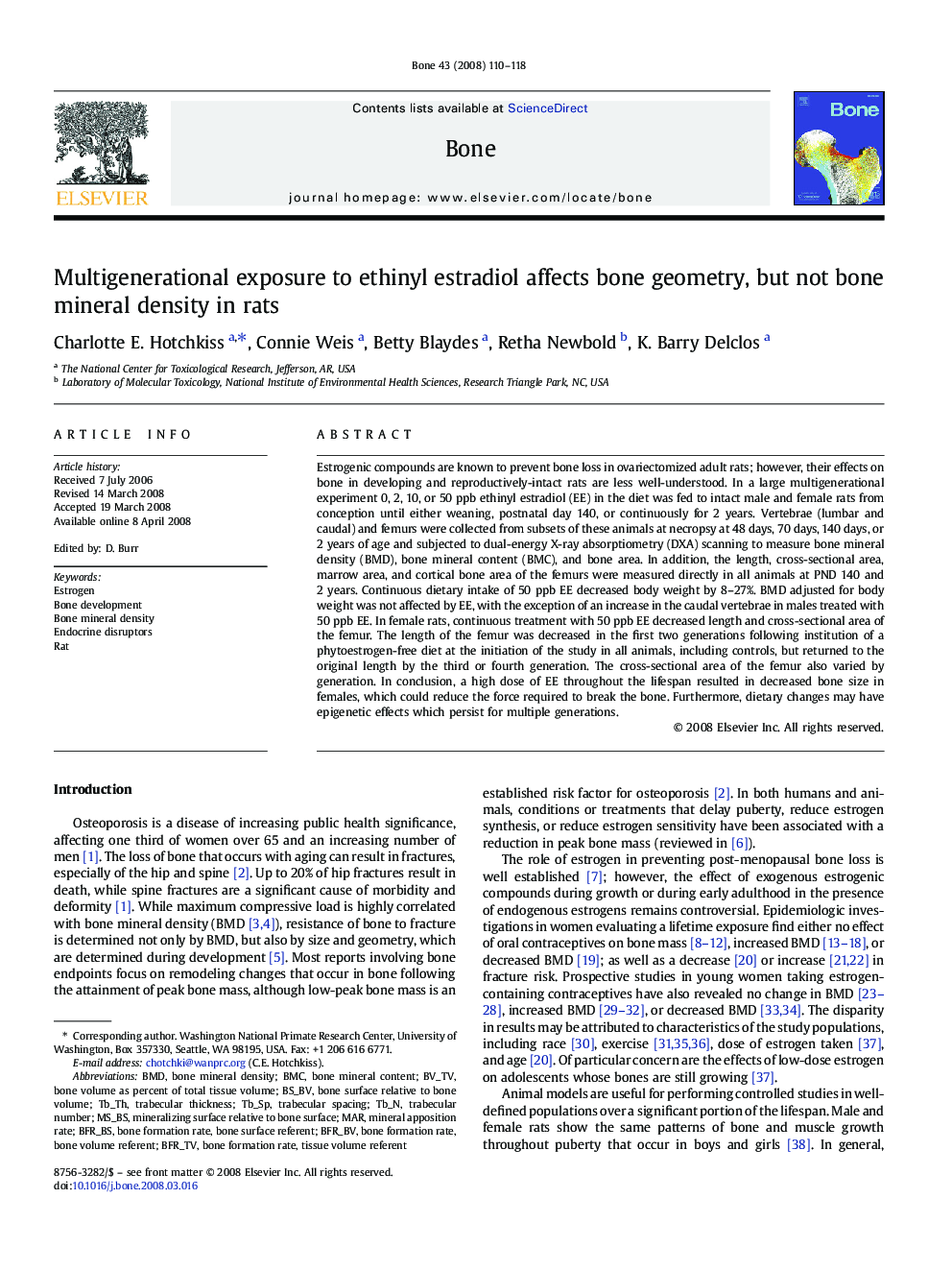| کد مقاله | کد نشریه | سال انتشار | مقاله انگلیسی | نسخه تمام متن |
|---|---|---|---|---|
| 5892552 | 1153327 | 2008 | 9 صفحه PDF | دانلود رایگان |
عنوان انگلیسی مقاله ISI
Multigenerational exposure to ethinyl estradiol affects bone geometry, but not bone mineral density in rats
دانلود مقاله + سفارش ترجمه
دانلود مقاله ISI انگلیسی
رایگان برای ایرانیان
کلمات کلیدی
BMCMARBMDEndocrine disruptors - اختلالهای غدد درون ریزBone development - استخوان سازیEstrogen - استروژنBone mineral density - تراکم معدنی استخوانtrabecular number - شماره تراککالtrabecular thickness - ضخامت تراککالBone mineral content - محتوای مواد معدنی استخوانRat - موش صحراییMineral apposition rate - میزان جذب مواد معدنی
موضوعات مرتبط
علوم زیستی و بیوفناوری
بیوشیمی، ژنتیک و زیست شناسی مولکولی
زیست شناسی تکاملی
پیش نمایش صفحه اول مقاله

چکیده انگلیسی
Estrogenic compounds are known to prevent bone loss in ovariectomized adult rats; however, their effects on bone in developing and reproductively-intact rats are less well-understood. In a large multigenerational experiment 0, 2, 10, or 50Â ppb ethinyl estradiol (EE) in the diet was fed to intact male and female rats from conception until either weaning, postnatal day 140, or continuously for 2Â years. Vertebrae (lumbar and caudal) and femurs were collected from subsets of these animals at necropsy at 48Â days, 70Â days, 140Â days, or 2Â years of age and subjected to dual-energy X-ray absorptiometry (DXA) scanning to measure bone mineral density (BMD), bone mineral content (BMC), and bone area. In addition, the length, cross-sectional area, marrow area, and cortical bone area of the femurs were measured directly in all animals at PND 140 and 2Â years. Continuous dietary intake of 50Â ppb EE decreased body weight by 8-27%. BMD adjusted for body weight was not affected by EE, with the exception of an increase in the caudal vertebrae in males treated with 50Â ppb EE. In female rats, continuous treatment with 50Â ppb EE decreased length and cross-sectional area of the femur. The length of the femur was decreased in the first two generations following institution of a phytoestrogen-free diet at the initiation of the study in all animals, including controls, but returned to the original length by the third or fourth generation. The cross-sectional area of the femur also varied by generation. In conclusion, a high dose of EE throughout the lifespan resulted in decreased bone size in females, which could reduce the force required to break the bone. Furthermore, dietary changes may have epigenetic effects which persist for multiple generations.
ناشر
Database: Elsevier - ScienceDirect (ساینس دایرکت)
Journal: Bone - Volume 43, Issue 1, July 2008, Pages 110-118
Journal: Bone - Volume 43, Issue 1, July 2008, Pages 110-118
نویسندگان
Charlotte E. Hotchkiss, Connie Weis, Betty Blaydes, Retha Newbold, K. Barry Delclos,